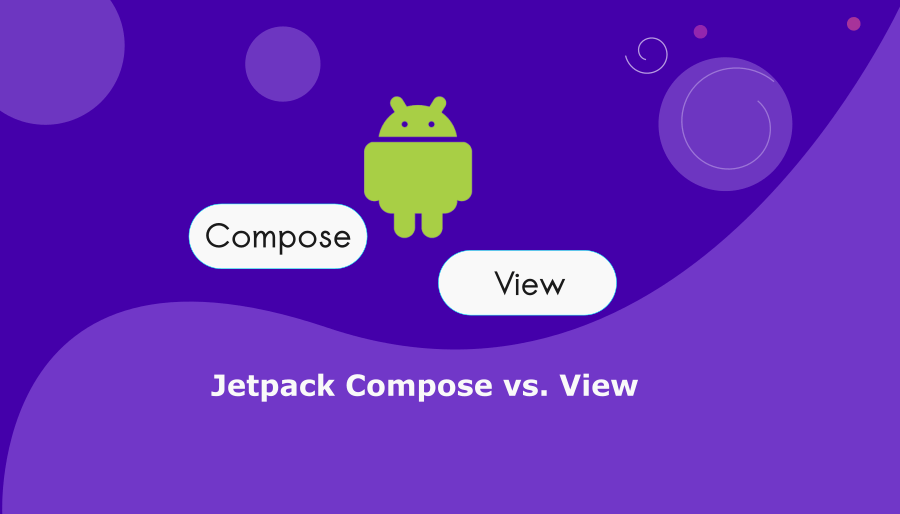Jetpack Compose vs View : Key Differences that You Should Know
Android developers have relied on the XML-based View system to design app layouts. However, with the introduction of Jetpack Compose, a new era of UI development has begun. In this tutorial, we will explore the differences between Jetpack Compose and the View system and help you decide which is the better choice for your project. Let’s compare Jetpack compose vs View.

Android Jetpack Compose vs View
The View system, based on XML layouts, has been the cornerstone of Android app development for many years. It offers flexibility but can become complex as the app’s UI grows.
Jetpack Compose is a modern, declarative UI toolkit that simplifies UI development.
It uses Kotlin programming, making it more concise and easier to maintain.
Performance of View based and Compose apps
Views are instantiated at runtime, which may impact app performance. Compose uses a direct painting approach for optimized rendering, resulting in better performance.
Productivity and Reactivity
In view based apps, XML layouts can become cumbersome, especially for complex UIs. Writing XML and managing View hierarchies can be time-consuming. Achieving reactivity in Views often requires complex event handling.
Compose leverages Kotlin’s power, making UI development more efficient with less code. It also offers a real-time preview feature for instant feedback.Compose encourages a reactive approach, making it easier to handle UI changes and interactions.
App Compatibility
The View system is well-established and has extensive documentation. It is compatible with older Android versions.
Compose is relatively new, and developers may face a learning curve. It requires Android 5.0 (API level 21) or higher.
Third-Party Libraries Support
View : Numerous third-party libraries and tools are available for Views, offering a wide range of features and extensions.
Jetpack Compose: While Compose’s ecosystem is growing, it may have fewer third-party libraries and tools available at present.
Adoption Rate
View: It has been the industry standard for Android app development for years.
Jetpack Compose: Compose is gaining momentum, and Google actively supports its adoption.
Verdict
To decide between Jetpack Compose and View, consider factors such as project complexity, development team expertise, and target Android versions.
For new projects, Jetpack Compose is a forward-looking choice, while existing projects may continue using the View system.



